
Test drive Nissan GT-R
The Nissan GT-R approached its tenth anniversary in great physical shape - it is still faster than most of the most powerful supercars on the planet, and now it is also well equipped.
The thermometer above one of the Sochi Autodrom boxes shows +38 Celsius, and it’s not even noon yet. “By the beginning of the GT-R rides at 40 pm the temperature will be over 45, and the air above the hot asphalt of the autodrome will probably be 46-XNUMX,” warns race driver and chief instructor of Nissan R-days Alexey Dyadya.
"So you need to watch the brakes more closely?" - I ask in response, while looking at the brakes of a couple of GT-Rs in the pit lane.
"It is always good to keep an eye on the brakes, but I have no doubts about the mechanisms of Nissan, even though they are cast iron." And, indeed, all test coupes have base brakes. Carbon ceramic is still an option. In general, the only thing that catches the eye in a restyled car is a new radiator grill with a family V-shaped chrome arc. A similar one is, for example, in the power-law crossovers X-Trail and Murano.
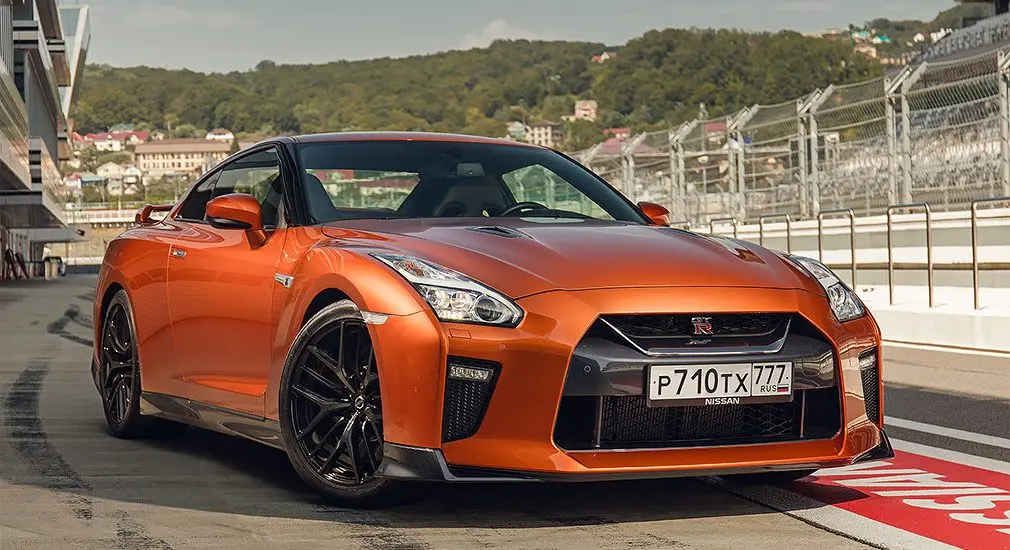
Are there really so few changes in appearance? Not. The thing is that the GT-R is that rare case when all decisions, even design ones, are subject to one factor - speed. It has always been this way and it is so in the updated car of the 2017 model year. For example, there is a new front bumper with a pointed "lip" and reshaped side skirts. They are more effective at preventing air from entering under the bottom, thereby reducing lift. And the bottom itself is now completely flat. In addition, the differently shaped gills in the fenders, coupled with the larger air intakes in the bumper, create a low pressure area, allowing more efficient cooling of the engine and brakes.
And also a massive rear wing on the trunk lid creates remarkable downforce, loading the rear axle of the car with an additional 160 kg at speeds in excess of 100 km per hour. In addition, the Japanese engineers slightly changed the shape of the rear pillars and fenders, making their edges smoother. Similar ones are installed on the most extreme GT-R with the Nismo (Nissan Motorsport) attachment. These solutions made it possible to maximally postpone the moment of air flow breakdown and significantly reduce the number of emerging parasitic air turbulences. By the way, the updated Nismo coupe itself will not be delivered to Russia.
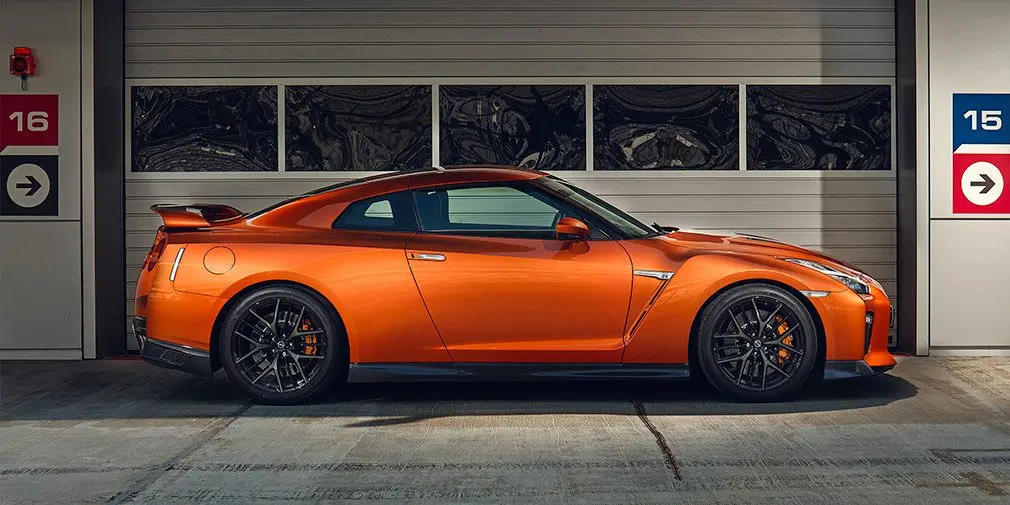
After briefing and medical examination, they are allowed to drive. And here it becomes clear why the update was started in the first place. Inside, the GT-R has changed: the front panel is now completely covered in leather, the air ducts around its edges are still round, but not a la Logan. They open and close with a convenient rotating washer, which, when triggered, also emits a very noble sound.
On the center console there are traditional rectangular deflectors. By the way, they were removed under the display of the multimedia system, because the "touchscreen" of the head unit itself has become noticeably larger. However, you can control all the functionality not only with the virtual keys on the screen, but also with a “live” analog washer-joystick on the tunnel next to the “robot” selector.
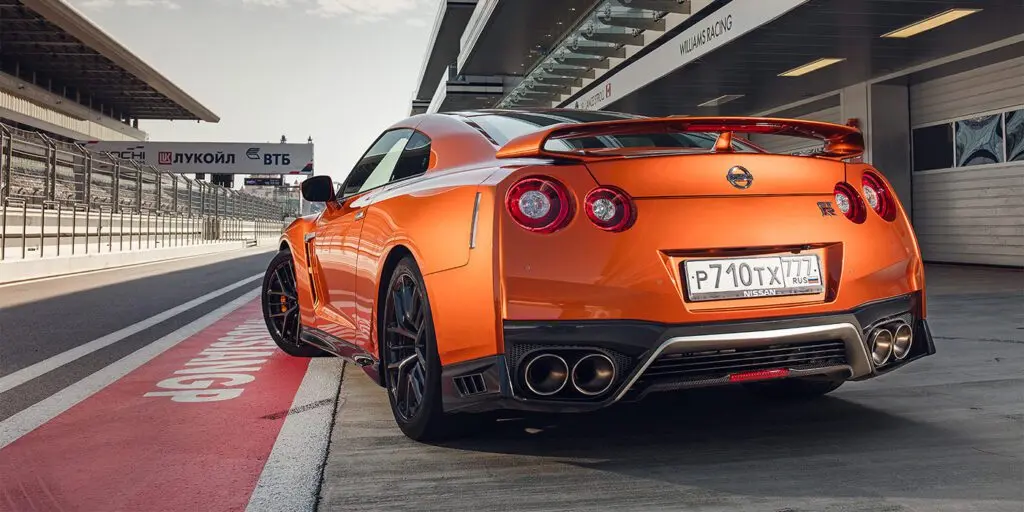
There is no more time to look. At the traffic light "green" lights up, and we with the instructor leave for the track. Immediately drown the "gas" pedal to the floor - the speed on the pit lane is limited to 60 km per hour. Therefore, it is impossible to feel the breathtaking acceleration, maybe it is for the better.
The "Nissan" did not name the acceleration time to 100 km / h, but, I remember, on the pre-reform car, the launch with launch-control accelerated the car to "hundreds" in 2,7 seconds. And it was scary. It is unlikely that anything has changed now, because the modernization of the GT-R engine took place in an evolutionary manner. Slightly only changed the settings of the control unit, increasing the maximum power of the twin-turbo "six" to 565 hp. (+15 HP), and peak torque up to 633 Nm (+5 Newton meters).
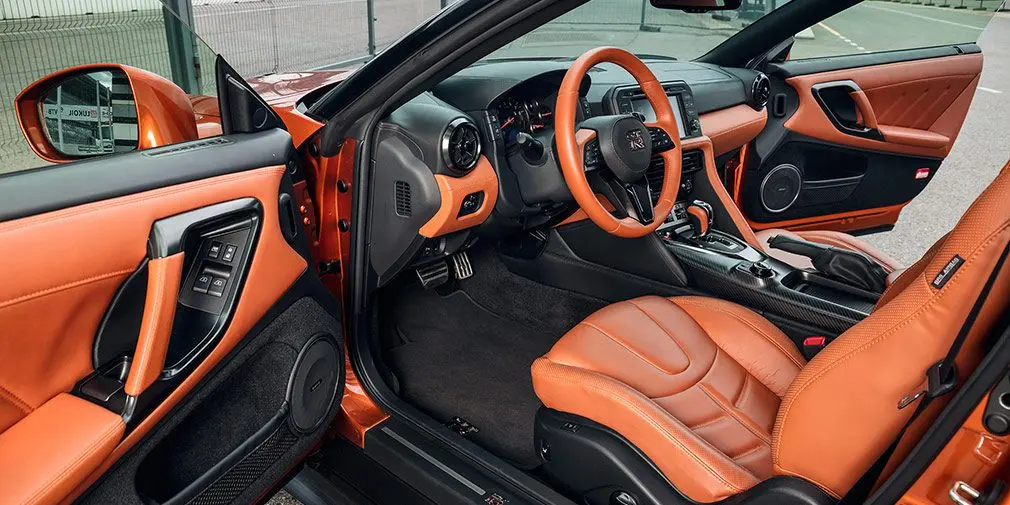
All these figures are valid for cars sold in Europe. The coupe comes to us in exactly the same specification, however, the lack of high-quality high-octane fuel does not allow the engine to develop its full power. Therefore, for Russia, Nissan claims a return of 555 forces. However, this is not the point of the GT-R - there are cars much more powerful.
Stability at high speed is Nissan's trump card. And he immediately spreads it on the hot asphalt of Sochi Autodrom. After the warm-up laps, when the rubber starts to work properly, the instructor allows, as they say, “press”. A gentle right turn at the end of the starting line is passed without braking, so by the end of the second straight, the speed approaches 180-200 km per hour.
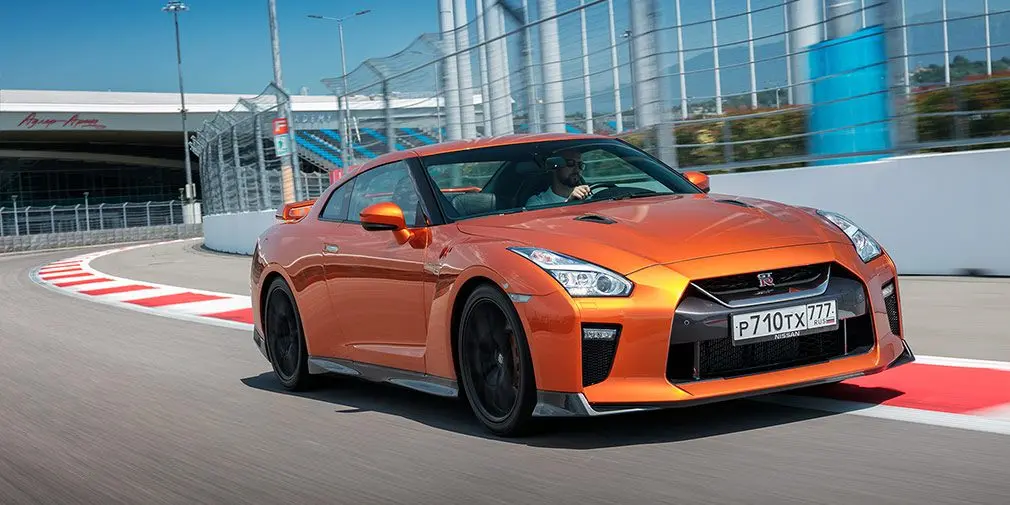
Then you have to dump in front of the second right and drive into a long arc along which stands the tribune of Daniil Kvyat. It is important to move with even traction here. With the gas pedal constantly recessed to half the speed exceeds 130 km / h, and the GT-R has no hint of a skid. Thanks to the new aerodynamics, the car is incredibly stable, and the clever four-wheel drive literally screws the coupe into a long, gentle corner.
“You can add a little more,” the instructor suggests. But my own instinct of self-preservation does not allow to increase the speed even more. After leaving the arc, two more sharp right turns follow, and then a bunch of right-left-right. All 18 turns are a breeze. And in none of them it is possible to find the limit of the car.
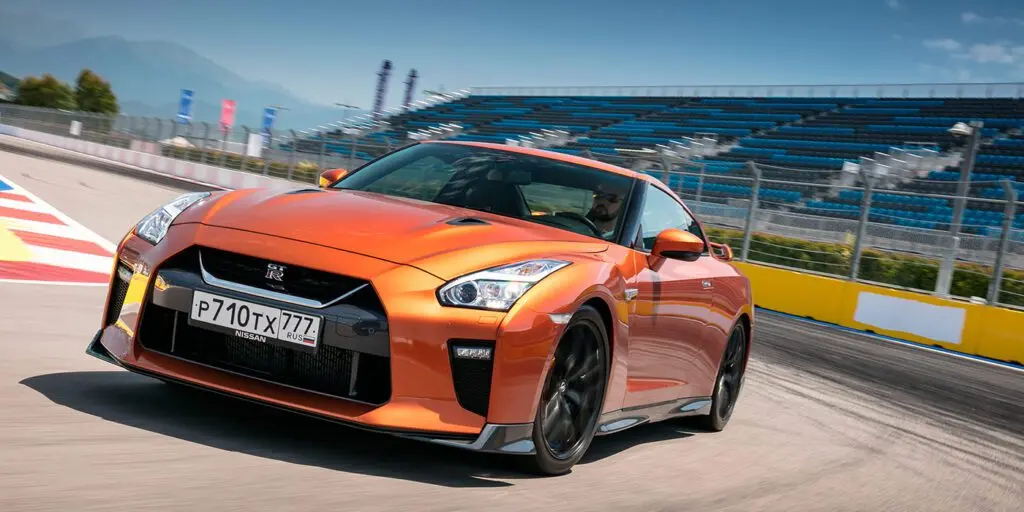
Yes, you can complain that there were only three laps to get to know the track, and three more to try to feel all the skills of the updated Nissan GT-R. However, if they let me in here for a month or two, I would still hardly find out about all his abilities. Apparently, this is exactly what separates real racers from ordinary drivers, and what keeps the Nissan GT-R as a standout car for a decade.
| A type | Coupe |
| Dimensions: length / width / height, mm | 4710/1895/1370 |
| Wheelbase, mm | 2780 |
| Ground clearance, mm | 105 |
| Cargo space, l | 315 |
| Curb weight, kg | 1752 |
| Gross vehicle weight, kg | 2200 |
| engine's type | Turbocharged petrol |
| Working volume, cubic meters cm | 3799 |
| Max. power, h.p. (at rpm) | 555/6800 |
| Max. cool. moment, Nm (at rpm) | 633/3300-5800 |
| Drive type, transmission | Full, RCP6 |
| Max. speed km / h | 315 |
| Acceleration from 0 to 100 km / h, s | 2,7 |
| Fuel consumption (city / highway / mixed), l / 100 km | 16,9/8,8/11,7 |
| Price from, $. | 54 074 |
